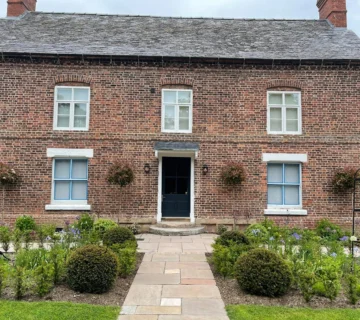Here's How To Do It
Planning On Wallpapering Your Living Room?
Wallpaper can change the mood of a living room. It can add pattern and colour to a room or play up an architectural feature. Expert says that wallpaper can play up the height of a room by accentuating it with a large vertical pattern.
Wallpapering the living room is a popular trend in interior design. Living room walls are often white or neutral in colour, but you can add wallpaper to the walls if you want to change up the room’s look. Just make sure the wallpaper you choose is high quality, as you do not want the wallpaper to bubble or peel.
Select wallpaper that complements the rest of your living room’s decor. You can use stripes, damask, or chevron wallpaper to create a dramatic look. You can also use tone-on-tone patterns as long as they are related in theme. However, remember to use patterns that complement each other.
If you are planning on wallpapering your living room, we can show you how to do it.
Things You Will Need to Wallpaper Your Living Room
If you’re planning on wallpapering your living room, there are several things you will need. You need basic tools and materials to apply wallpaper in your living room. Here are the basic supplies you will need.
- Wallpaper
- Wallpaper paste
- Line measuring tool
- Wallpaper application brush
- Wallpaper trimming knife
- Wallpapering table
- Smoothing tool
- Pencil
How to Wallpaper Your Living Room?
Wallpapering the living room is tricky but can be done by following the right technique. Here are the steps you need to follow to apply wallpaper in your living room.
Step 1: Preparing The Wall
To get the best wallpaper finish, you need to prepare the wall first. You should clean the surface with a mild, non-abrasive cleaner. Then, allow the surface to dry completely. The wall should be smooth and free from bumps or uneven surfaces. These bumps will interfere with the wallpaper’s adhesion and can make it fall off. If the surface is rough, sand it down to create a smooth surface. Once you’ve prepped the wall, you can start installing your wallpaper.
Step 2: Starting Out
To begin wallpapering, you should measure your walls. This will help you match patterns. The first patch of wallpaper is very important, so you need to start with utmost caution. You need to make sure that the pieces of wallpaper align perfectly. To do this, you need to make sure that the wallpaper is perfectly vertical. You can use a line measuring tool or a level to mark lines on the wall.
Step 3: Paste The Wall For Wallpaper
When it comes to wallpaper, one of the most important things to remember is how to paste the wall. It involves sticking the wallpaper panels to the wall and covering the paper underneath with adhesive. This process may seem a bit confusing, but it can be done quite easily. You need to use wallpaper paste and brush to perfectly apply the adhesive on the wall. Make sure you cover every part, especially the edges so that the wallpaper can stick perfectly.
Step 4: Hang The Wallpaper On The Wall
After applying the wallpaper paste, you need to finally hang the wallpaper on the wall. Start applying the wallpaper from top to bottom. Leave a couple of centimetres so that there is no gap between the wallpaper. Now, you need to slowly ease the wallpaper down the wall. Gently smooth it out with your hand to ensure it stays straight and even. You can also use a smoothing tool to remove any air bubbles. When you reach the bottom of the wall, trim the extra wallpaper. You can use a knife to trim the wallpaper.
Step 5: Apply Wallpaper On Corners And Tricky Areas
Wallpapering tricky areas like corners and edges can be quite challenging. They are often not straight, but spackling and grinding can help create a straighter edge. You can also use a corner shield, which you can buy from your local DIY store. A corner shield will help you to achieve a perfect 90-degree angle. First, determine the exact size of the corners. Make sure to measure the corners before cutting the paper. This will help ensure that your wallpaper hangs level. Once you cut the wallpaper, carefully apply the paste and put the wallpaper on the wall.




